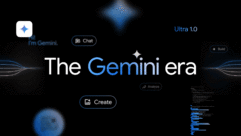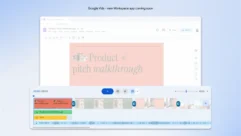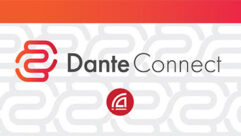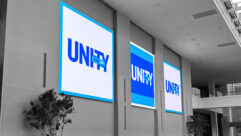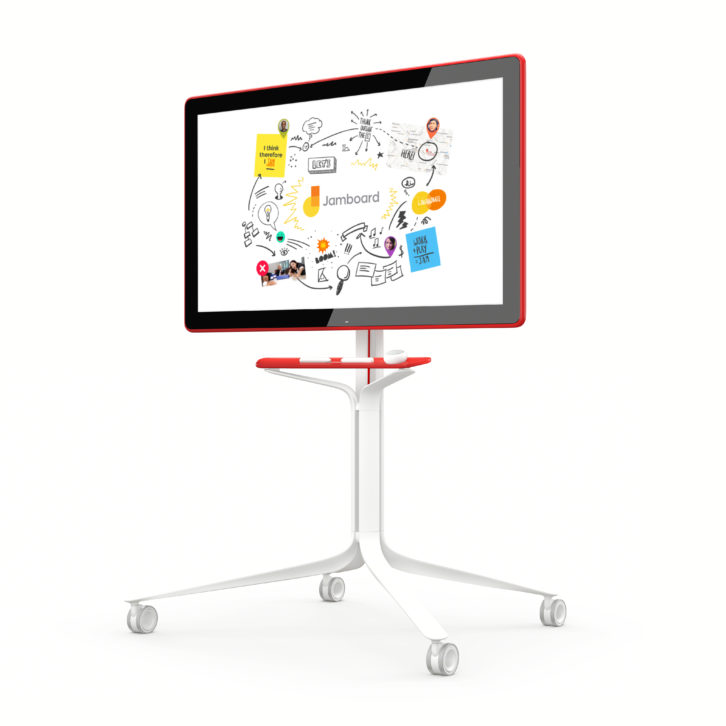
Google Jamboard’s User-Friendly Collaboration and Conferencing Tools Enable University of Michigan Math Professor to Conduct Graduate Class Remotely
In higher education mathematics departments, a blackboard is prime real estate. They’re easy to use, highly visible, and grant instructors the space to demonstrate to students how to work through problems. However, with the spread of COVID-19, access to classrooms with blackboards has been limited. Math instructors have had to rely on static applications such as PowerPoint to create lessons to present during the remote class. Others, like University of Michigan’s Indika Rajapakse, Ph.D., associate professor of computational medicine and bioinformatics, mathematics, and biomedical engineering, wanted a more interactive approach when teaching his classes – mathematics of biological networks and mathematics of data – to master and doctoral candidates each year.
“I’m really interested in the notion of learning,” said Rajapakse. “I think learning should come from writing, not memorizing slides. You need to engage students while you’re teaching. They need to see you work through problems, or even see where mistakes are commonly made, which only happens when they see you write out and work through the problem.”
He wanted a solution that would allow him to write naturally, emulating the traditional chalkboard experience remotely. In the spur of the moment, Rajapakse ordered a digital whiteboard he had received an advertisement for in his email. However, the researcher in him took over. He dug deeper into the interactive flat panel market and discovered Google Jamboard, the only all-in-one 4K UHD interactive display from Google exclusively distributed through BenQ.
When Rajapakse requested more information about the Jamboard, BenQ’s BenQ’s ECS KPM team immediately walked him through the Google-rich display. It is integrated with the Google for Education and Google Meet applications right out of the box — the chosen platform for Rajapakse as well as many educators at University of Michigan. Its built-in wide-angle camera, microphone, and speakers eliminate the complexity of having to operate separate devices to launch video conferences. The demonstration was enough to convince him to cancel his other display and get the Jamboard.
“I like Google,” he said. “In fact, I teach about Google network, how the search engine works, and Google’s PageRank algorithm. I didn’t have to think about the features. I already use them.”
Once it was mounted on his office wall, Jamboard’s built-in cloud-based Google Workspace applications enabled Rajapakse to get started right away. To hold classes, he simply launched the Google Meet right from the screen or a link on his Google Calendar.
The Jamboard was engineered to be incredibly user-friendly and feel natural. Using the whiteboard feature, Rajapakse is able to demonstrate how to solve math problems like he would if he were in the classroom. Jamboard allows for 16 points of simultaneous touch, with the option to use a finger or the included stylus to work through problems. He can write or draw different models and strategies. When he makes mistakes, he simply wipes them away using the Jamboard eraser. He also can search for graphics and images to incorporate into his session on the fly, creating dynamic, timely material and helping students better comprehend information and commit it to memory.
His students watch the process in real-time. With a tap on screen, he can seamlessly switch between video conferencing and the whiteboard. What’s more, he can invite students to work on screen from within Meet, the Jamboard app, Chrome browser, or from another Jamboard. After class, he shares the session with students to review and study via Google Workspace cloud sharing capabilities. The Jamboard delivered the sought-after chalkboard experience and more.
Since installing the Jamboard, Rajapakse reports that his students have completely embraced the collaborative learning experience. He also uses the display in his research and lab work on the immune system and its impact on learning with the hope to possibly create novel forms of machine learning. He can meet with colleagues across the world, share ideas, and work through theories.
“This is the future of learning,” said Rajapakse. “Using the Jamboard is fitting since Larry Page [co-founder of Google] went to school here.”


